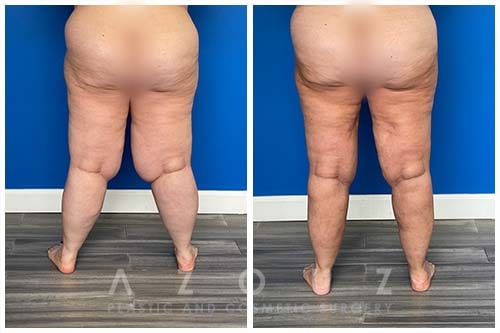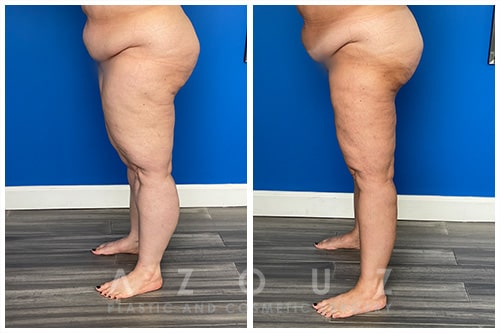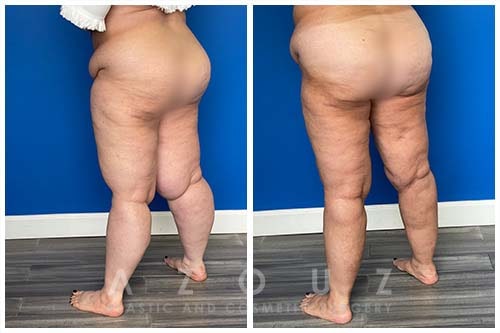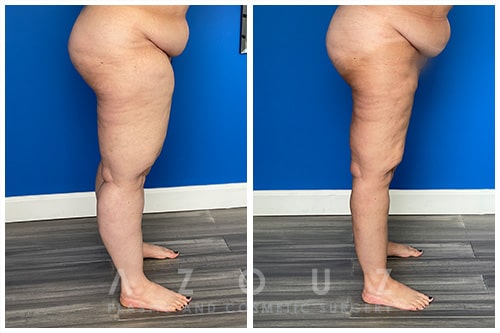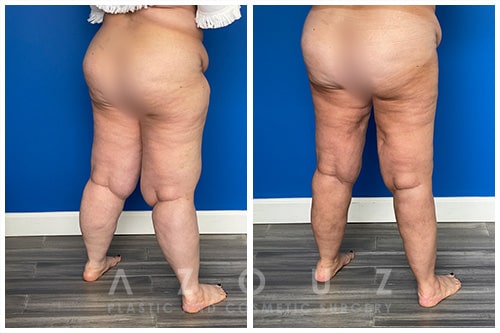Request A Consultation
Lipedema Surgery
Lipedema is a chronic condition characterized by abnormal fat buildup, primarily in the legs, arms, hips, buttocks, and stomach.
Lipedema is genetically inherited and is symmetrical in distribution, with both sides of the body being affected equally. In contrast to obesity, lipedema fat deposits are typically unaffected by weight loss measures.
To relieve their symptoms, some patients consider compression therapy, elevation, or lymphatic drainage massages. Most patients find that surgery is the most effective treatment for lipedema. Dr. Azouz, a board-certified plastic surgeon in Dallas, Texas, has expertise in treating lipedema to help ease symptoms and improve the quality of life.
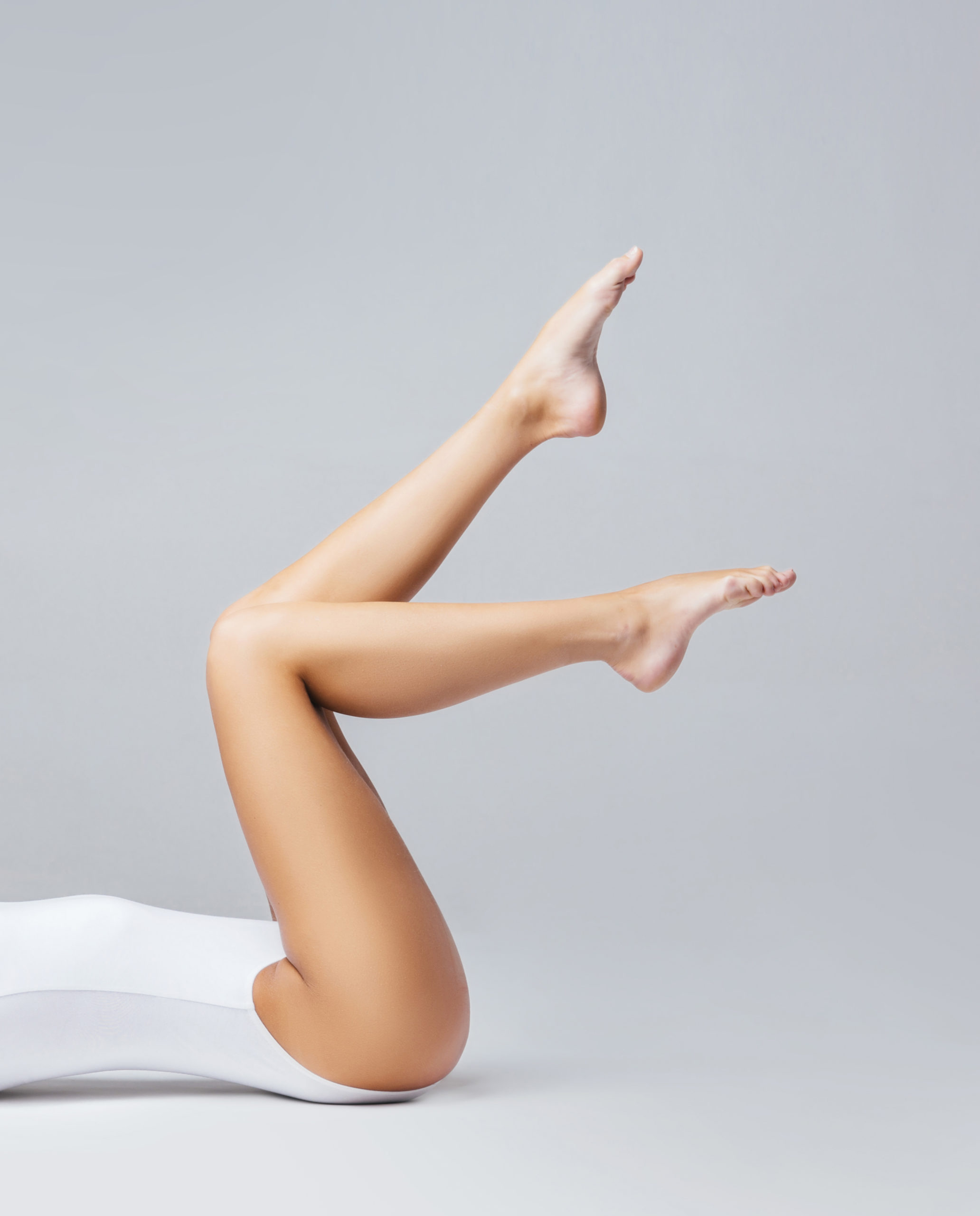
Lipedema Center of Excellence
Dr. Solomon Azouz founded the Lipedema Center of Excellence to improve the lives of those suffering from lipedema. This program is a model of comprehensive care, providing professional and compassionate care for those suffering from this chronic fat disorder.g
Dr. Azouz, offers cutting-edge diagnostic techniques, a lipedema diagnosis, and, tailored treatment programs that may involve both conservative methods such as compression therapy, specific workouts, and advanced liposuction techniques.
Dr. Azouz’s mission for the Lipedema Center of Excellence addresses both the physical and emotional elements of living with and curing lipedema.
What are the symptons of lipedema?
- Symmetric swelling of affected areas including legs, arms, hips buttocks, or abdomen
- A disproportion of legs compared to the knees or the disproportion of hips, stomach, or buttocks
- Easy bruising
- Pain
- Sensitivity to touch in any of the lipedema-affected areas
- Spider veins
- Swelling
- Orange-peel texture to the skin

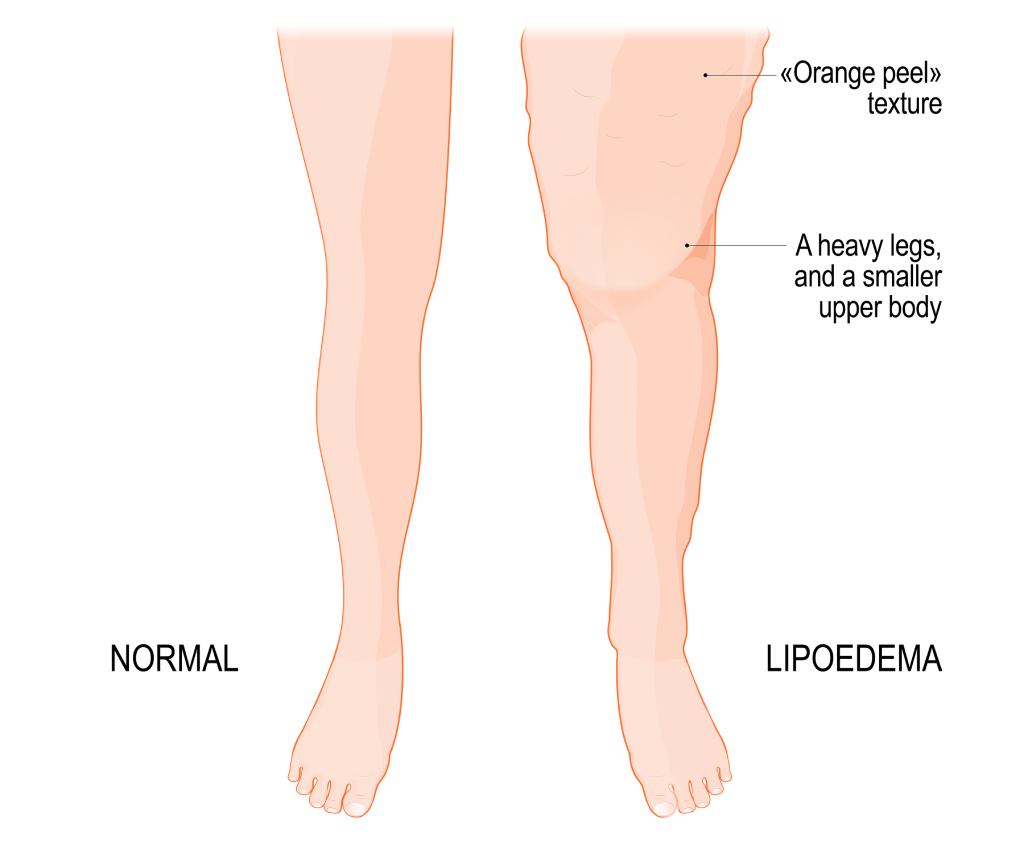
The “Normal” leg has a smooth, even appearance.
The “Lipoedema” leg appears larger, with an uneven surface described as having an “orange peel” texture.
Additional labels point out that the leg affected by lipoedema appears heavier and that lipoedema often affects the lower body, creating a noticeable size difference between the legs and the upper body.
This visual highlights the characteristic symptoms of lipoedema, including disproportionate fat distribution and skin texture changes.
Can I get a Lipedema Diagnosis
Dallas plastic surgeon Dr. Solomon Azouz diagnoses lipedema with a history and physical.
History
Lipedema often presents with hormone imbalance. It is critical to provide a history of the occurrence of lipedema in puberty, pregnancy, peri-menopause, menopause, and following gynecologic surgery.
Physical
Dr. Azouz will examine the fat distribution and palpate the areas of lipedema to determine if fluid, nodules, or scarring are present.
Am I a candidate for lipedema surgery?
Candidates for lipedema surgery are usually those who have been diagnosed with lipedema and have not improved with non-surgical interventions such as manual lymphatic drainage or compression therapy.
Many patients continue to experience symptoms from lipedema nodules, despite significant weight loss with bariatric surgery: gastric sleeve, bypass, or lap band.
Ideal candidates suffer from significant discomfort, mobility issues, or diminished quality of life. They should have a stable body weight, be in good overall health, and be nonsmokers.
Board-certified plastic surgeon Dr. Azouz optimizes patients for surgery to help improve their recovery. This includes achieving a healthy BMI, taking iron supplements, and an anti-inflammatory lipedema diet.

What are the different types of lipedema?
Lipedema presents itself in a variety of forms, each with its own set of characteristics and affected areas. Dr. Solomon Azouz in Dallas is well-versed in recognizing and treating different types of lipedema. Dr. Azouz takes a thorough approach to addressing the specific problems involved with each stage of lipedema. Lipedema treatment may comprise a combination of techniques, such as compression therapy, and surgical interventions, such as liposuction, to ease symptoms and improve general well-being. Lipedema appears in stages that are distinguished by the progression of the condition and the location of excess fat.
Nonsurgical Treatments for Lipedema
Unfortunately, there is no medical treatment that typically results in the complete resolution of lipedema.
Compression and elevation can be helpful, but they do not address the underlying fatty tissue. Similarly, non-surgical fat reduction (liposuction alternatives) such as laser fat removal, creams, and fat freezing have not been proven to remove deep lipedema and lipodystrophy.
Though weight loss can remove fat, in general, it does not remove the lipedema nodules. Compression garments for lipedema can be painful, hot, cause sweating, and can be poorly tolerated.
Surgical Treatments for Lipedema
Surgical options for lipedema include liposuction, lipectomy (direct removal of fat and nodules), and excess skin removal.
Many major medical organizations have listed liposuction as the only effective treatment for lipedema. Liposuction and surgical excision remove the lipedema nodules in the calves, legs, thighs, abdomen, and arms. Once the nodules are removed, less stress is placed on lymphatics and blood vessels, which can decrease pain and improve lipedema symptoms.
Dr. Solomon Azouz utilizes a variety of liposuction techniques to remove stubborn and scarred fatty tissue.
Dr. Azouz may need to perform multiple procedures to address all areas of lipedema. It’s important to note that some surgeries may need to be spaced apart to allow for adequate healing between each procedure.

Liposuction for Lipedema
Dr. Azouz uses a combination of liposuction techniques to remove lipodystrophy, lipedema nodules, and scarred fat from lipedema-affected areas. These liposuction techniques include:
Surgeries for Lipedema
Brachioplasty
Brachioplasty is a procedure that removes extra fat and sagging skin from the arms. Board-certified plastic surgeon Dr. Azouz performs a brachioplasty by carefully placing incisions on the inner arms and removing excess fat and skin. This improves arm contour and reduces flabbiness, resulting in a more aesthetically pleasing appearance.
Abdominoplasty (Tummy Tuck)
Abdominoplasty removes extra fat and skin from the abdomen. A drainless tummy tuck is frequently combined with muscle tightening to improve abdominal tone. Dr. Azouz’s method produces a smoother and firmer abdomen contour, addressing the specific needs of lipedema patients.
Body Lift
Often performed after substantial weight loss or for lipedema treatment, a body lift is a comprehensive operation that addresses extra skin and fat in numerous regions. Board-certified plastic surgeon Dr. Azouz removes extra skin and fat by strategically placing small camouflaged incisions, usually around the torso. This helps to remove excess fat and saggy skin from the back. By addressing the effects of lipedema in multiple places, body lift surgery produces a more toned and proportionate body form.
Thigh Lift
A thigh lift is a procedure that reshapes the thighs by removing extra skin and fat. Thigh lift operations are designed for lipedema patients and involve strategically placed incisions to remove excess tissue. This can lead to improved thigh contour, which contributes to an overall improved aesthetic appeal by treating excess fat accumulation in the upper legs.
Forearm Lift
A forearm lift for lipedema surgery includes the removal of extra skin and nodules, as well as specific liposuction techniques. The technique reshapes and tightens the forearms, enhancing mobility and relieving the discomfort caused by lipedema-related fat accumulation. A forearm lift can remove lipedema fat nodules, resulting in smoother and more sculpted arms.
Calf Lift
A calf lift for lipedema surgery removes excess skin and lipedema nodules in the lower legs using advanced liposuction and skin excision techniques. The procedure reshapes and slims the calves, reducing the bulk produced by lipedema fat deposits while also increasing mobility and leg contour. A calf lift removes lipedema nodules and excess skin, resulting in a more defined calf form.

Anesthesia for Lipedema Surgery
Dr. Solomon Azouz most commonly uses local and sedation anesthesia when performing lipedema surgery. Dr. Azouz has found that his patients recover more quickly and have less nausea with the use of local and sedation anesthesia versus the use of general anesthesia.
Recovering from Lipedema surgery
After undergoing lipedema surgery with Dr. Solomon Azouz, it is important to give yourself a few days to completely rest, recover, and elevate your legs as much as possible. Within the first few weeks following lipedema surgery, many patients can return to desk work as long as they continue to elevate their legs. During your follow-up appointments, Dr. Azouz will help guide you on when you can add in prolonged standing time and more vigorous activities.
Combination of Lipedema with other plastic surgery
Dr. Azouz usually does not recommend combining other plastic surgery procedures with lipedema surgery. However, each patient is different. If you are interested in undergoing a combination surgery with your lipedema, book a consultation with Dr. Solomon Azouz. During your consultation, Dr. Azouz will discuss your surgical options and determine if you are a candidate to combine another procedure with your lipedema procedure.
Cost of Lipedema Surgery
The cost of lipedema surgery is highly variable and depends on the sites that need liposuction or lipectomy (cutting out fatty tissue). The price also depends on the type of fatty tissue, scar tissue, the severity of lipedema, medical comorbidities, the history of previous surgery, and the patient’s weight. Following the history and physical examination, Dr. Azouz will assess the individual patient to determine the Lipedema surgery price and explain the financing options available for his patients. Dr. Solomon Azouz partners with advocacy groups to help patients get insurance coverage for lipedema surgery.
Articles for Lipedema
-

Can I use insurance for plastic surgery?
Knowing whether a procedure is cosmetic or reconstructive is crucial when it comes to plastic surgery, and
Continue reading -

How to Sleep Comfortably After Lipedema Surgery
Lipedema surgery can be life-changing, reducing discomfort, swelling, and mobility difficulties caused by this condition. However, post-surgical
Continue reading -

What Qualifies a Liposuction Expert? Beyond the scalpel
Liposuction is more than simply a medical procedure; it’s an art form. A true liposuction expert in
Continue reading

Lipedema Surgery Results
Lipedema surgery can have a life-changing impact on anyone suffering from this stubborn lipedema. Dallas plastic surgeon Dr. Solomon Azouz uses liposuction to remove excess fat accumulation, particularly in the arms, legs, stomach, and even the back. Patients often report a significant reduction in discomfort and pain, better mobility, and improved body contour following surgery. Dr. Azouz’s expertise offers a tailored approach that addresses the specific needs of each patient. Many patients report a significant improvement in their general well-being and a more comfortable and active lifestyle. The results of lipedema surgery are unique to each patient. Cosmetic improvements can be seen after several weeks; however, most patients will see final results after 6-12 months after lipedema surgery.
Schedule a Consultation
with Dr. Azouz
If you are a patient suffering from Lipedema, lipodystrophy, or lymphedema call us at (972) 702-8888 or contact us online. Arrange a consultation with Dallas Lipedema plastic surgeon Dr. Azouz today, and take the first step to enhance your figure. Board-certified plastic surgeon Dr. Solomon Azouz also offers virtual consultations for patients who live far from Dallas. During your virtual consultation, Dr. Azouz will discuss options for traveling to Dallas for lipedema surgery
